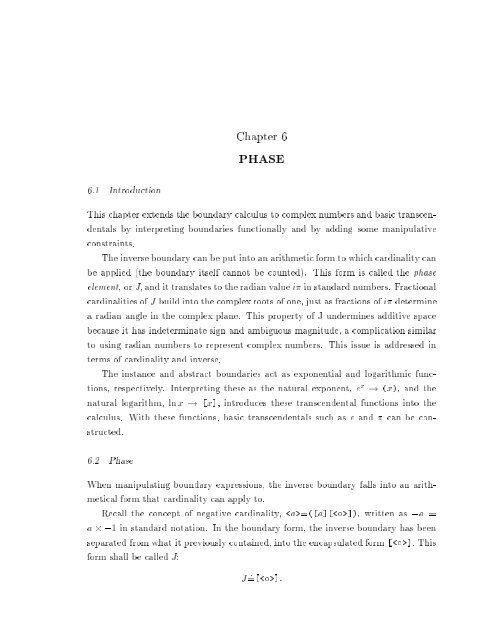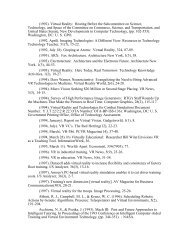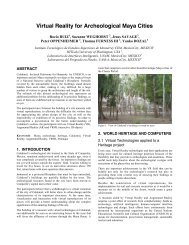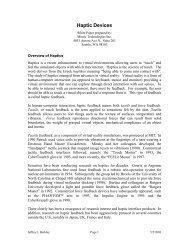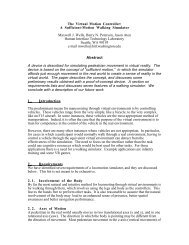A Calculus of Number Based on Spatial Forms - University of ...
A Calculus of Number Based on Spatial Forms - University of ...
A Calculus of Number Based on Spatial Forms - University of ...
You also want an ePaper? Increase the reach of your titles
YUMPU automatically turns print PDFs into web optimized ePapers that Google loves.
Chapter 6<br />
PHASE<br />
6.1 Introducti<strong>on</strong><br />
This chapter extends the boundary calculus to complex numbers and basic transcendentals<br />
by interpreting boundaries functi<strong>on</strong>ally and by adding some manipulative<br />
c<strong>on</strong>straints.<br />
The inverse boundary can be put into an arithmetic form to which cardinality can<br />
be applied (the boundary itself cannot be counted). This form is called the phase<br />
element, orJ, and it translates to the radian value i in standard numbers. Fracti<strong>on</strong>al<br />
cardinalities <str<strong>on</strong>g>of</str<strong>on</strong>g> J build into the complex roots <str<strong>on</strong>g>of</str<strong>on</strong>g> <strong>on</strong>e, just as fracti<strong>on</strong>s <str<strong>on</strong>g>of</str<strong>on</strong>g> i determine<br />
a radian angle in the complex plane. This property <str<strong>on</strong>g>of</str<strong>on</strong>g> J undermines additive space<br />
because it has indeterminate sign and ambiguous magnitude, a complicati<strong>on</strong> similar<br />
to using radian numbers to represent complex numbers. This issue is addressed in<br />
terms <str<strong>on</strong>g>of</str<strong>on</strong>g> cardinality and inverse.<br />
The instance and abstract boundaries act as exp<strong>on</strong>ential and logarithmic functi<strong>on</strong>s,<br />
respectively. Interpreting these as the natural exp<strong>on</strong>ent, e x ! (x); and the<br />
natural logarithm, ln x ! [x]; introduces these transcendental functi<strong>on</strong>s into the<br />
calculus. With these functi<strong>on</strong>s, basic transcendentals such aseand can be c<strong>on</strong>structed.<br />
6.2 Phase<br />
When manipulating boundary expressi<strong>on</strong>s, the inverse boundary falls into an arithmetical<br />
form that cardinality can apply to.<br />
Recall the c<strong>on</strong>cept <str<strong>on</strong>g>of</str<strong>on</strong>g> negative cardinality, =([a][]); written as ,a =<br />
a ,1 in standard notati<strong>on</strong>. In the boundary form, the inverse boundary has been<br />
separated from what it previously c<strong>on</strong>tained, into the encapsulated form []: This<br />
form shall be called J:<br />
J =[]:<br />
:


